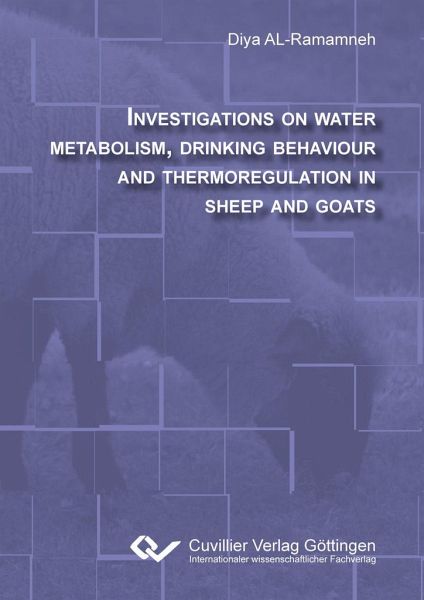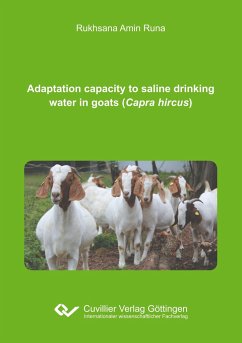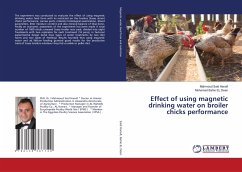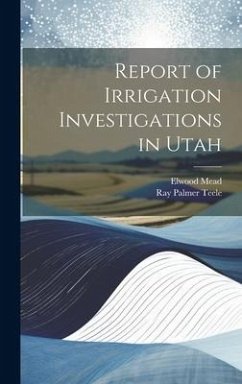
Investigations on water metabolism, drinking behaviour and thermoregulation in sheep and goats

PAYBACK Punkte
0 °P sammeln!
The general aim of this study was to evaluate whether D2O dilution technique would accurately predict water intake and turnover in sheep and goats under different practical management practices (water restriction and shearing) by comparing the results with measured water intake. Another focus was the species comparison between sheep and goats in relation to their use of water. Three experiments were conducted using German blackhead mutton sheep and Boer goats to compare the water intake and the drinking behaviour in both species under a free watering regime. Two consecutive trials were perform...
The general aim of this study was to evaluate whether D2O dilution technique would accurately predict water intake and turnover in sheep and goats under different practical management practices (water restriction and shearing) by comparing the results with measured water intake. Another focus was the species comparison between sheep and goats in relation to their use of water. Three experiments were conducted using German blackhead mutton sheep and Boer goats to compare the water intake and the drinking behaviour in both species under a free watering regime. Two consecutive trials were performed to characterize the drinking behaviour and the water intake in both species under ad libitum and restricted water administration. Finally, shorn and unshorn German blackhead mutton sheep were compared in their drinking behaviour and water intake and thermoregulation using infrared thermography and other physiological parameters. In each study, we used the D2O dilution technique to estimate individual water intake and total body water content and compared it with direct individual measurement of water intake by weighing water buckets before and after water administration. The results of our studies underline that The D2O dilution technique estimated individual water intake in sheep and goats under stall - feeding conditions with high accuracy. Drinking behaviour is considered as an important monitoring technique for animal welfare and reaction of animals to different watering regimes. Coat morphology play role on water requirement for thermoregulation. As a result, we found that shorn sheep are more efficient in thermoregulation compared with wooly unshorn sheep.













